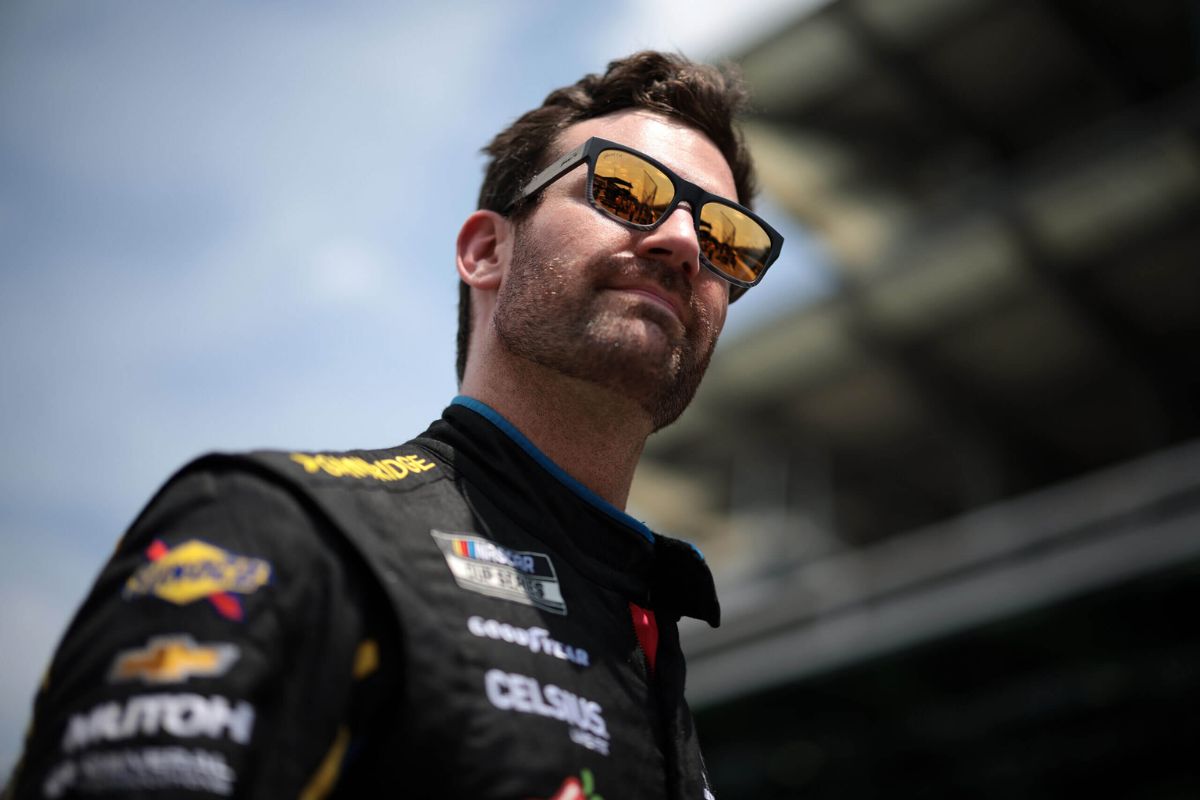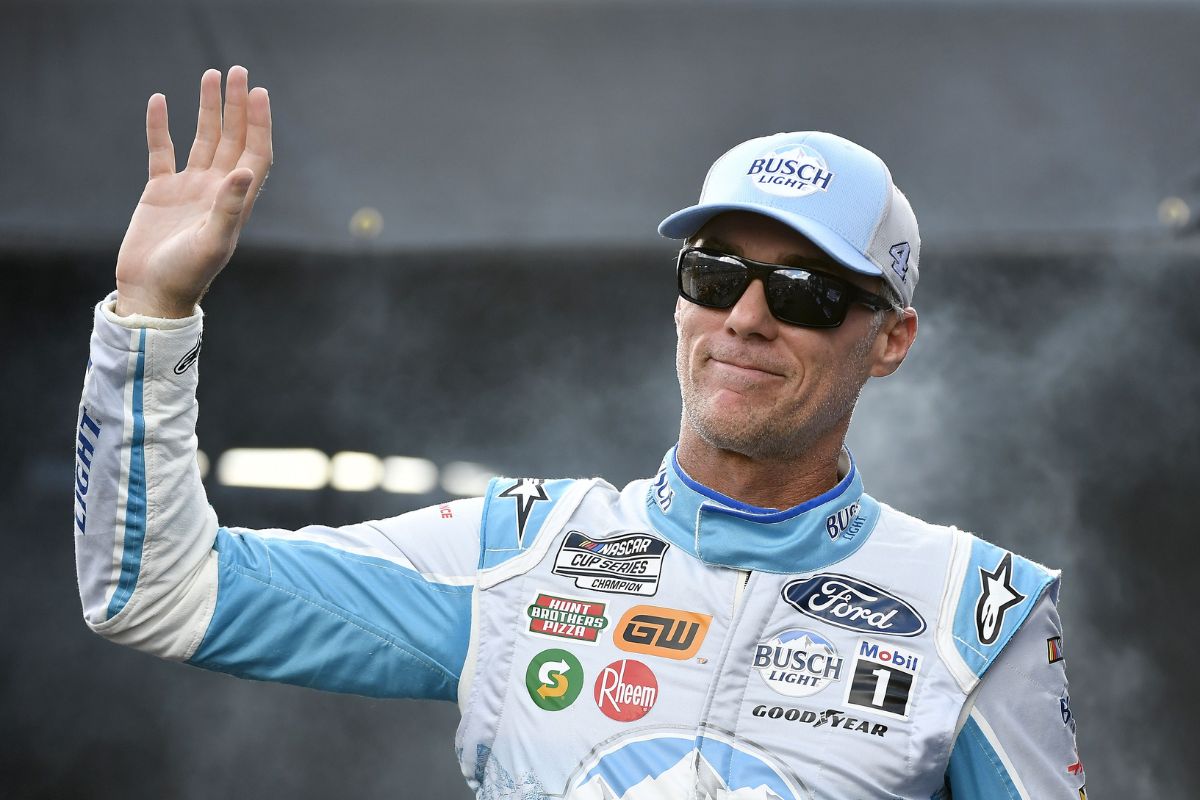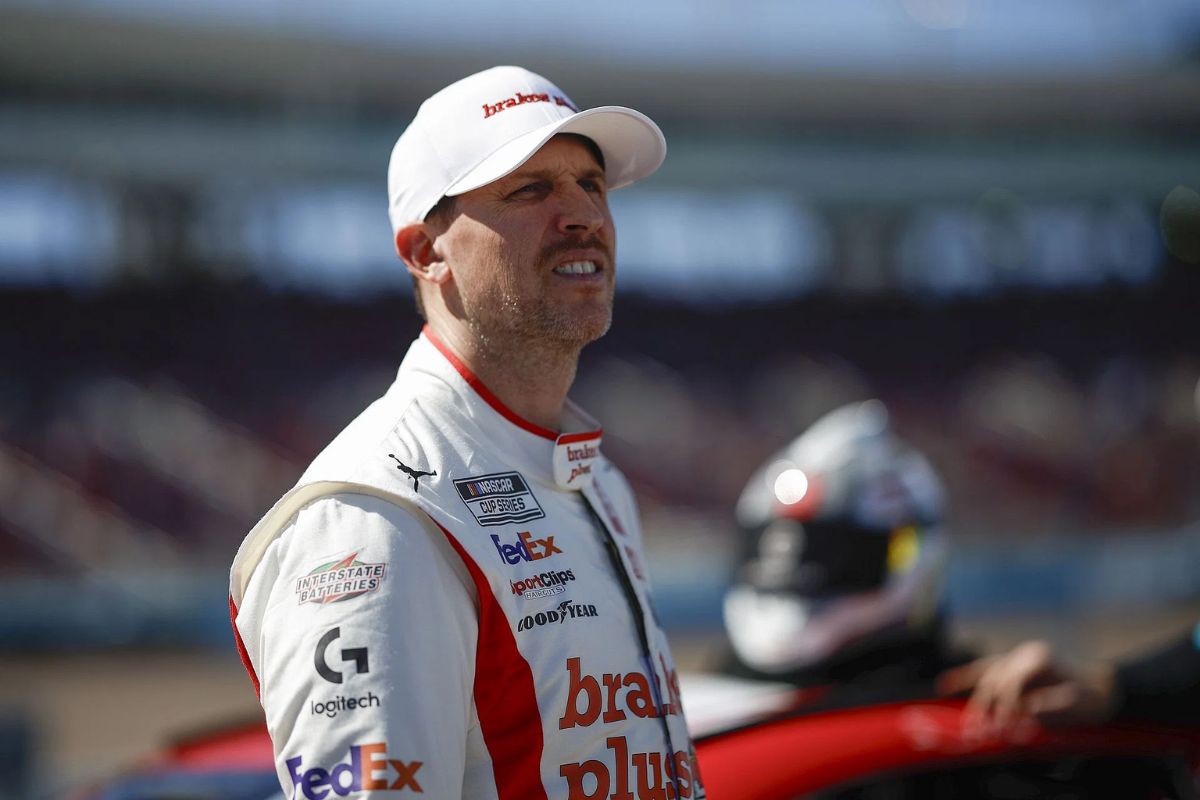Kevin Harvick Blames NASCAR for Corey LaJoie’s Flip: Kevin Harvick‘s recent comments regarding Corey LaJoie‘s incident at Michigan International Speedway emphasize a growing concern about the safety of NASCAR’s Next-Gen car. By highlighting a troubling trend of cars flipping during races, Harvick calls into question the adequacy of current safety measures and the design of these vehicles. His insistence on a thorough review prompts critical reflections on NASCAR’s responsibilities in ensuring driver safety. As discussions surrounding the integrity of the sport intensify, one must consider the implications of Harvick’s assertions and how they might shape future regulations.
Key Highlights
- Kevin Harvick criticized NASCAR for the design of the Next-Gen cars, linking LaJoie’s crash to ongoing safety issues in the sport.
- Harvick noted that cars going airborne during races has become a recurring problem, emphasizing the need for improved vehicle safety measures.
- He highlighted the ease with which LaJoie’s car flipped, indicating a flaw in the car’s aerodynamics and safety protocols.
- Harvick connected LaJoie’s incident to previous airborne crashes, advocating for a thorough review of car design and engineering.
- Despite LaJoie escaping unharmed, Harvick called for NASCAR to prioritize driver safety to prevent similar incidents in the future.
Corey LaJoie’s Incident at Michigan International Speedway
During the recent race at Michigan International Speedway, Corey LaJoie’s season took a dramatic turn for the worse as his car unexpectedly went airborne, a concerning event that not only hampered his performance but also raised serious safety questions within the sport. This incident is representative of a precarious situation that has become increasingly prevalent in NASCAR, where vehicle aerodynamics can lead to catastrophic outcomes.
Ride on board with Corey LaJoie as he flips at Michigan.#NASCAR | USA Network pic.twitter.com/kKTx0ugf72
— NASCAR on NBC (@NASCARonNBC) August 19, 2024
LaJoie’s misfortune comes amid a challenging season, marked by his announcement to leave Spire Motorsports at the end of the 2024 Cup Series campaign. With his future hanging in the balance, the strain to deliver strong performances intensifies. However, the airborne crash has compounded his struggles, diverting attention from his driving skills to the inherent risks of the sport.
Despite escaping injuries, LaJoie’s incident serves as a striking reminder of the vulnerabilities drivers face on the track. It also highlights an urgent need for continuous evaluation of safety protocols and vehicle design within NASCAR. The fact that this type of occurrence has happened before raises alarms about the adequacy of current safety measures.
As discussions unfold regarding the implications of the Next-Gen car, the industry must prioritize driver safety and address the factors contributing to airborne incidents. LaJoie’s experience at Michigan is not just a personal setback; it is a call to action for NASCAR to reassess and improve safety standards, ensuring that the integrity of the sport does not come at the cost of its participants’ well-being.
Kevin Harvick’s Reaction to the Next-Gen Car’s Safety
The recent incident involving Corey LaJoie has reignited discussions surrounding the safety of the Next-Gen car, prompting veteran driver Kevin Harvick to voice his concerns. Harvick expressed shock at the car’s behavior during LaJoie’s airborne crash, an occurrence he deemed unexpected and alarming. This incident has led to a significant analysis of the safety measures implemented with the Gen-7 cars, which were initially intended to improve driver protection.
Harvick’s reaction highlights a growing apprehension within the NASCAR community regarding the effectiveness of the Next-Gen car’s safety features. His observations emphasize a need for a deeper examination of the design and engineering aspects that have not met expectations.
I think Corey was trying to get the side draft and actually ran into the left fender and got himself out of shape. And the way that he spun out, kind of got that car sideways.”
| Aspect | Observation |
|---|---|
| Safety Intentions | Next-Gen cars aimed to improve safety. |
| Harvick’s Shock | Unexpected crash dynamics observed. |
| Community Concern | Calls for reassessment of safety measures. |
The discrepancy between the intended safety improvements and the actual performance of the Next-Gen car raises significant questions for NASCAR. As the sport evolves, it becomes imperative to prioritize driver safety above all else. Harvick’s frank insights serve as a reminder that while innovation is vital, it must not compromise the well-being of those who compete on the track. Moving forward, it is important for NASCAR to address these concerns thoroughly to guarantee the integrity of the sport and the safety of its drivers.
Harvick’s Concerns About the Car Flipping Over
Notable concerns have emerged regarding the propensity of the Next-Gen car to flip over, particularly highlighted by Kevin Harvick‘s recent commentary on the incident involving Corey LaJoie. The alarming sight of LaJoie’s #7 Chevrolet Camaro ZL1 flipping multiple times as it shifted from asphalt to the infield grass has raised critical questions about the safety design of these vehicles.
While LaJoie escaped without physical harm, the mechanics behind such an unexpected airborne maneuver warrant serious scrutiny.
Harvick’s perspective, shared during his podcast “Kevin Harvick’s Happy Hour,” reflects a growing unease among drivers about the Next-Gen car’s stability. He emphasized the shocking ease with which LaJoie’s car turned over, stating, “There’s just no reason that those race cars should turn over like that when they’re all by themselves.”
His comments echo sentiments expressed by others in the industry, including Jeff Burton, who highlighted this concern as a considerable risk for drivers and teams similarly.
“I was really shocked at how easily it [car] just flipped over on its own and I think that is going to be a high concern. I heard Jeff Burton say this on the broadcast a high concern for all the drivers, all the technical guys, all the teams for as easy as that car turned over. There’s just no reason that those race cars should turn over like that when they’re all by themselves.” – Harvick
The implications of these incidents extend beyond LaJoie’s experience, as they signal potential flaws in the car’s design that could compromise safety. The Next-Gen car, intended to improve competition and performance, may inadvertently expose drivers to greater risks.
As NASCAR contemplates the future of its vehicle regulations, it must address these critical safety issues to guarantee that the integrity of the sport does not come at the expense of driver safety. Harvick’s insights serve as a clarion call for immediate action and reassessment of the current vehicle standards.
Harvick’s Reference to Past Incidents
Although Kevin Harvick‘s recent comments primarily focus on the alarming incident involving Corey LaJoie, they also draw attention to a troubling trend in NASCAR regarding cars going airborne. Harvick’s insights reflect a growing concern about the safety implications of vehicle dynamics during races, particularly under conditions that lead to cars lifting off the ground.
By referencing Ryan Preece’s harrowing experience at Daytona last year, Harvick emphasizes the alarming frequency with which these incidents are occurring. His observation that cars can become airborne even without direct contact highlights a significant issue within the sport’s current vehicle design and aerodynamics.
The scenario he describes—where a car is pushed from the side but still lifts off on its own—reveals vulnerabilities inherent in the race cars that warrant immediate attention.
Harvick’s statement, “We’ve seen that happen several times,” resonates with seasoned observers of the sport, suggesting that this phenomenon is not merely an isolated incident but part of a disturbing pattern. The fact that cars flip over under “weird instances” signals a need for rigorous analysis and potential intervention by NASCAR officials.
“We’ve seen that happen several times when somebody’s pushing on the left side door and helps them kind of get lifted off but that car just lifted off all on its own…We’ve seen a few of these cars flip over and it seems like when they get to just these weird instances.” – Harvick
Ryan Preece flipped 10 times in this violent crash late at Daytona.#NASCAR | @NBC and @Peacock pic.twitter.com/ho1EpXZr3E
— NASCAR on NBC (@NASCARonNBC) August 27, 2023
This acknowledgment from a veteran driver like Harvick serves as a call to action, urging stakeholders to revisit safety protocols and vehicle specifications to mitigate risks. As NASCAR continues to evolve, addressing these past incidents is vital to ensuring driver safety and preserving the integrity of the sport.
Denny Hamlin’s Support for the Next-Gen Car
Many within the NASCAR community have expressed varying opinions on the safety of the Next-Gen car, but Denny Hamlin stands out with his supportive perspective. Following the recent incident involving Corey LaJoie, Hamlin articulated a measured yet optimistic view on the vehicle’s safety features, particularly in rollover situations. His remarks emphasize a vital aspect of the ongoing discourse surrounding the Next-Gen car’s design and performance.
Hamlin acknowledged the violent nature of racing incidents, referencing Ryan Preece’s experience where, despite sustaining injuries, he avoided serious harm. “The cars I feel like are pretty safe in rollover situations,” Hamlin stated, asserting that the Next-Gen car addresses important safety concerns effectively. He highlighted that the car’s design mitigates risks associated with intrusions, which has been a notable improvement over previous models.
“I mean, the cars I feel like are pretty safe in roll-over situations. Seems like between that and intrusions, that’s kind of the strong point of the Next-Gen car. We saw with [Ryan] Preece, he had some bloody eyes, but he had a pretty violent one. His body was banged up, but he didn’t have any serious injuries. That’s what the goal of it was.” – Hamlin
While Hamlin recognized the challenges posed by high-speed actions, he maintained confidence in the car’s safety, stating, “I feel comfortable with the speeds that we’re at.” His insights suggest that while risks remain inherent to the sport, the structural improvements of the Next-Gen car have made considerable strides in protecting drivers.
“I can’t speak for him, but certainly feel like we have a pretty safe car. I feel comfortable with the speeds that we’re at. There’s just going to be a way, when you turn these things sideways, with that pan underneath the bottom, it’s literally like a wedge, the air is pushing that thing right over the top. Short of getting rid of the underbody, I just don’t know how you’re going to stop it.” – Hamlin
However, it is fundamental to balance this optimism with the valid concerns raised by drivers like Kevin Harvick, who highlight incidents of cars going airborne with minimal contact. As NASCAR navigates these complexities, Hamlin’s support serves as a critical voice advocating for continued evolution in safety standards while acknowledging the sport’s inherent dangers.
News in Brief: Kevin Harvick Blames NASCAR for Corey LaJoie’s Flip
The critique by Kevin Harvick regarding NASCAR’s safety measures highlights urgent concerns surrounding the Next-Gen car design. The repeated occurrence of airborne incidents, as exemplified by Corey LaJoie’s crash, necessitates a thorough evaluation of the vehicle’s safety protocols. Harvick’s observations reflect a broader apprehension within the racing community about the potential dangers posed by current car specifications. Immediate and proactive measures must be implemented to improve driver safety and prevent future incidents on the track.
ALSO READ: Kevin Harvick Predicts Michigan Winner: Top Contender for the FireKeepers Casino 400





